01 Dec 2021 — 18 Mar 2022
Beuys Open Source
group exhibition
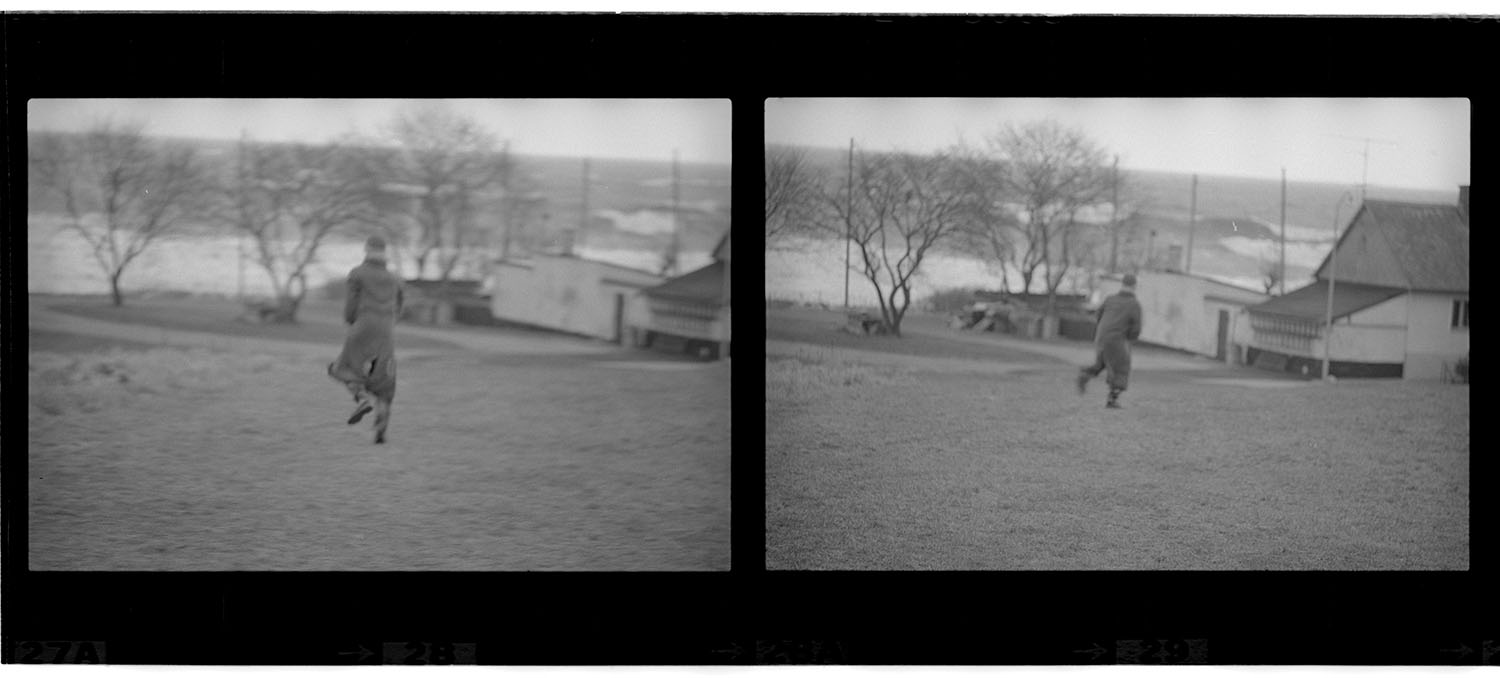
Carla Åhlander, Choreography for one early morning in the past that would otherwise fall into, 2021
photographic black and white resin print in a clear acrylic frame , 14 x 32. 5 cm
If we wish to reignite the process of social imagination, and thus the very possibility of systemic political change in the direction of greater emancipation, we must be able to think of a space that allows such recognition, beyond the smoothing waves of the current reality-system.
Federico Campagna

Installation View
Born, May 12, 1921; lived forever after, January 23, 1986.
Joseph Beuys was and continues to be a somewhat contentious figure. Typecast as a capital ‘A’ Artist – a self-anointed, genius, on the brink of divinity – Beuys also fulfills the criteria of a maverick: someone who is unorthodox and independently-minded. Today, when applied to an individual, this term connotes a leader, or at least, some kind of dynamic figurehead – a politician perhaps? Indeed, in an age of … well, you know … those unorthodox (uncouth) and independently-minded (nationalistic) characteristics associated with the leaders of certain nation-state seem to recall those criticisms too easily thrown at Beuys, the maverick. Specifically, how shock and spectacle came to foreground a persona, in turn diminishing any political work. Benjamin H. D. Buchloh (2011; 559) sketches the parallel nicely when he describes Beuys’ practice as one with a radical orientation, one that pushed towards a new beginning, but one that did not allow for the necessary mourning of a recent past.[1]
Lest we forget Beuys’ politic: that construction of life he aspired to set in motion. Rooted in the mythos of magic, of art, and of various cultural expressions, Beuys’ vision (whether we see this as ‘good,’ ‘bad,’ or are indifferent to it) shifted boundaries. Soziale Plastik (Social Sculpture), The Free International University, the Organisation for Direct Democracy, and the commitment to ‘city forestation instead of city administration’ are some of the name-checkable political projects that could be cited as evidence for the new beginning Beuys was looking to create. Here, through modes of assembly, active participation was caressed as a way to “reshape society and history.”[2] In other words, it was through the sculpting of human relations that Beuys’ sought to enable a shift in our reality-system. What was perhaps lacking in Beuys’ philosophy of participation, however, was an understanding that reality transcends politics, and any conflagration of the two too easily ends up as cultural propaganda.[3]
Now on the 100-year anniversary of Beuys’ birth, what could be gleaned from the politic he wished to establish? Is there a way to transcend the dichotomies of identity politics and cultural propaganda apparent in most maverick social enterprises (those associations that reverberate with conceptions of Beuys’ as the artist/shaman/politician/professor)?
Not an exhibition in homage, Beuys Open Source treats the legacy of Joseph Beuys as something of a publicly accessible data set. Working with this twenty-first century metaphor involves seeing the Artist not as a political figure but as someone with far more social sway in our contemporary age: the startup CEO. That is, the founder of something innovative; the boss with skittish determination; the convener of bodies, who together can defy normalcy to materialise fantasy. Here, we are reminded that epistemologically both mysticism and symbolism – two words steeped in Beuysian associations – have common roots in that which is collectively agreed, believed, and followed.
Taking the project of assembly as a catalyst, Beuys Open Source intends to act as a site of fabulation; a (non)ground for speculative conversations; an open-plan office of sorts, where Beuysian ‘source code’ can be mined, traded, and debated anew. As an exhibition built with prefiguration as a conceptual core, the artists brought together each embraces the potentials of differing materials and moments – from found objects to folk-law – constructing around these rich narratives, falsies, and conspiracies; in turn, the artists (together and/or alone) echo the Geist of Beuys’ without the spectacular ultimatum of the new beginning.
Participating artists include: Carla Åhlander, Mikael D. Brkic, Dan Coopey, Rafael Pérez Evans, Laura Ní Fhlaibhín, Johanna M. Guggenberger, Steph Huang, Daniel Huss, Susanne Kriemann, Elisabeth Molin, Joel Tomlin, and Abbas Zahedi.
Exhibition design by Veljko Marković
[1] Benjamin H. D. Buchloh, in Hal Foster et al. (2011 [2016]). Art since 1900: Modernisum, Antimodernism, Postmodernism. London. Thames and Hudson. p 556-561.
[2] Peter R. Kalb (2013). Art Since 1980: Charting the Contemporary. London. Laurence King. p 29.
[3] Federico Campagna (2018). Technic and Magic: The Reconstruction of Reality. Bloomsbury. London.

Mikael Brkic , Peacock, marginalia, 2021
bronze, 80 x 22 x 12 cm, ed.3 + 2AP

Installation View
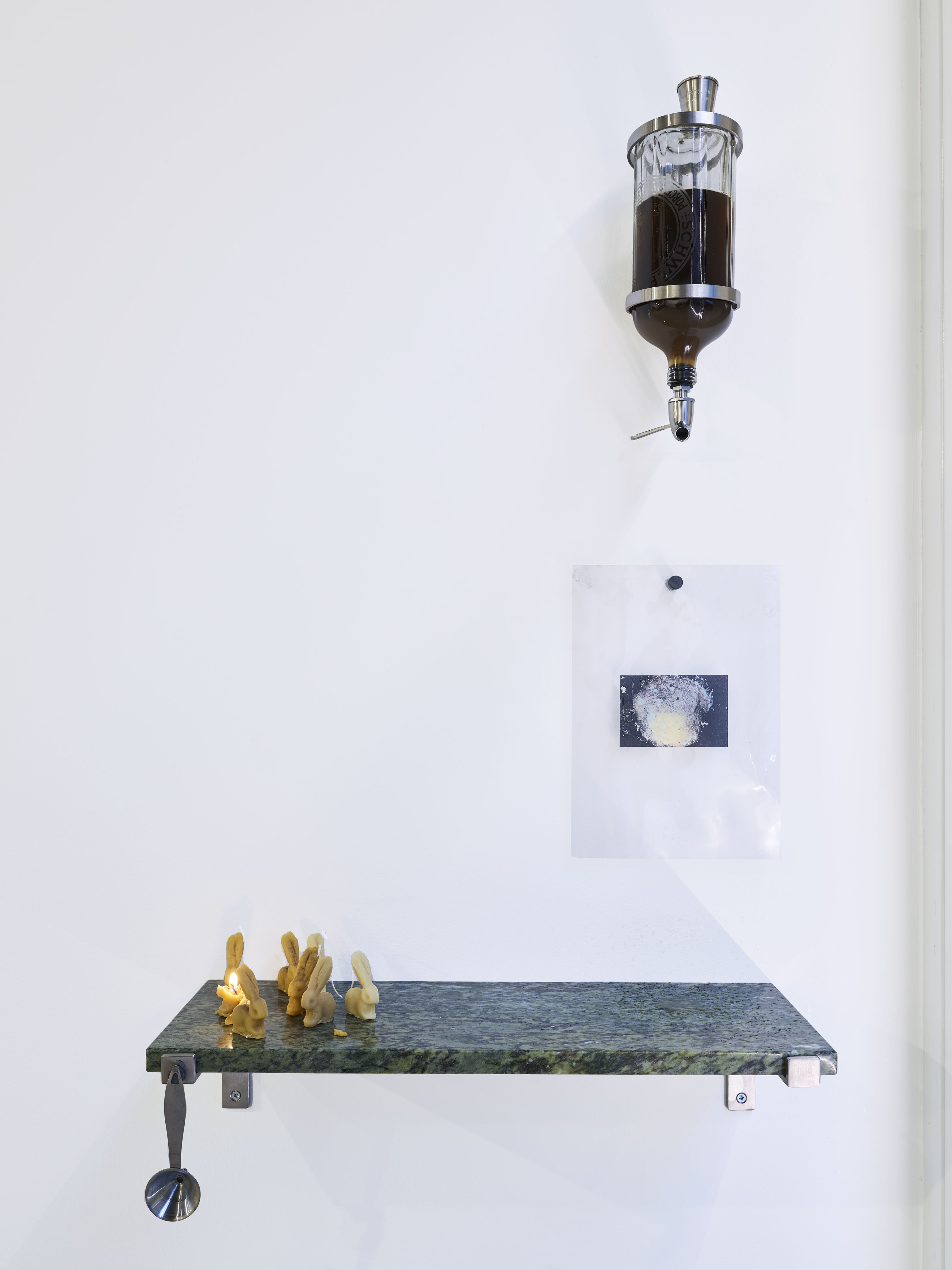
Laura Ní Fhlaibhín, Phytophthora infestans, Biddy Early, Stinking Bob and a drove of hares make a colony of care, 2021
The artist’s great grandmother’s Lil Hendrick’s glass bottle filled with a vodka and Ruithéal Rí- Herb Robert - Stinking Bob-tincture, drove of beeswax hares, stainless steel cups, Irish marble slab

Laura Ní Fhlaibhín, Phytophthora infestans, Biddy Early, Stinking Bob and a drove of hares make a colony of care, 2021
The artist’s great grandmother’s Lil Hendrick’s glass bottle filled with a vodka and Ruithéal Rí- Herb Robert - Stinking Bob-tincture, drove of beeswax hares, stainless steel cups, Irish marble slab

Laura Ní Fhlaibhín, Phytophthora infestans, Biddy Early, Stinking Bob and a drove of hares make a colony of care, 2021
The artist’s great grandmother’s Lil Hendrick’s glass bottle filled with a vodka and Ruithéal Rí- Herb Robert - Stinking Bob-tincture, drove of beeswax hares, stainless steel cups, Irish marble slab

Installation View

Susanne Kriemann, Mngrv (nylonsnoon), 2020
aluminium, rope collected in mangrove habitat. Inkjet on Hahnemühle Photorag 308 gr, monotype printed with raw oil found in mangrove habitat, 70 x 100 cm
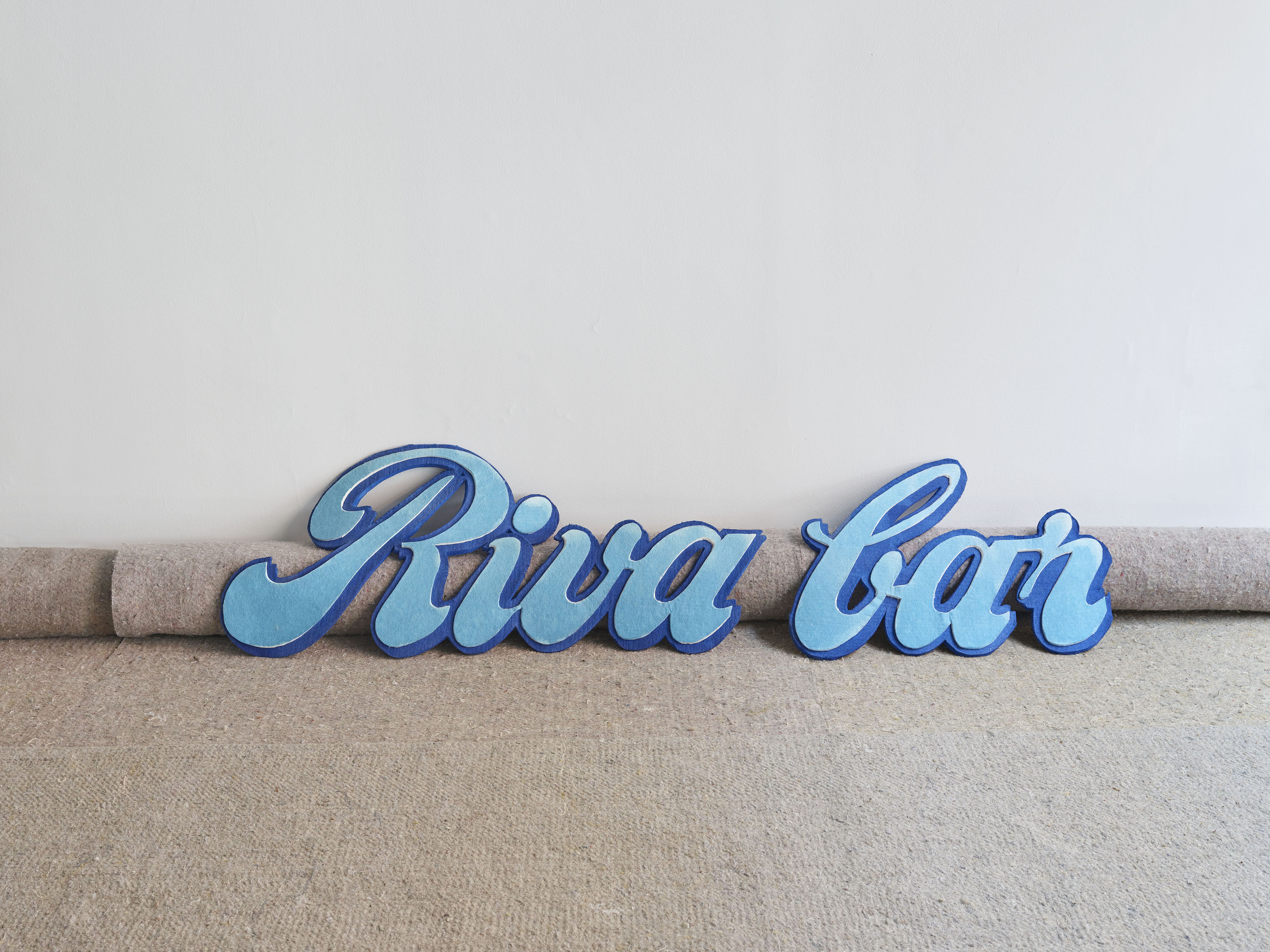
Mikael Brkic , Riva Bar (Felt), 2021
felt sign, 180 x 50 x 2cm

Mikael Brkic , Riva Bar (Felt), 2021
felt sign, 180 x 50 x 2cm

Installation View

Rafael Pérez Evans, Can and Stone, Thermos, 2021
stone, can, tealight, between 26 x 12cm & 16 x 10cm

Rafael Pérez Evans, Can and Stone, Thermos, 2021
stone, can, tealight, between 26 x 12cm & 16 x 10cm
It was my second year at grammar school. I’d just turned 11 and gotten used to the daily grind of cramming Latin vocabulary on the 40-minute bus ride from our village to Kassel Hauptbahnhof. One day after school, on my way to the bus station I walked past the Fridericianum. I was by myself, this skinny little blonde girl with pigtails, thick glasses and a huge satchel. There was a crowd in front of a make shift stage. I got excited because I suspected this to be some sort fair ground attraction. As I moved into the crowd of adults, I could hear them muttering and exclaim things. They seemed agitated somehow. Then I spotted this man on stage wearing a coat and a hat. He was gesticulating. I couldn’t make out what he’s saying. But the crowd seemed to respond to him and became even more roused. Is he a magician? I wondered. It was confusing, because the stage didn’t look like a fairground. There was no glitter or colour. It was all drab and the proceedings seemed to take a long time. I had to catch my bus!
So, I tore myself away and walked up Treppenstrasse to the Hauptbahnhof. That evening, as my mum was preparing dinner, I turned on the local news. And there it was! The scene I had experienced that afternoon. It was on television! It was such an exciting feeling that something I had personally witnessed was on the news. This artist Joseph Beuys — I knew who he was, everybody knew who he was because he’d put up this huge pile of rocks in front of the Fridericianum — had taken the replica of the crown of Tsar Ivan the Terrible and melted it into a bunny. Many people were angry and upset because they thought the crown was so beautiful. Locals were outraged that Beuys dare melt this piece of great artisanship down into a silly bunny. My mum explained to me that the crown was a symbol of aggression and war and that the bunny symbolized peace. I thought that was so cool. I couldn’t understand why one would make a replica of a crown anyways. What was the point? After all, you couldn’t play with a crown made of real gold. The news moved on and my mum asked me to set the table. But afternoon forever shaped my idea of contemporary art: it’s an event that draws everybody in and everybody — even I as a child — was allowed to comment and have an opinion. It makes some people angry and some people elated, but most of all everybody is talking. It’s like magic. And it’s on the news.
Growing up in Kassel in the 80s meant growing up with Beuys. I remember my mum’s patients, mainly Volkswagen workers and farmers, discussing whether those 7000 oak trees were really art. He engaged people – not just the art crowd, but everybody. To me he was the face of the documenta, which energized an otherwise dreary and depressing city. I loved how his art ruffled the feathers of my conservative teachers and provided much needed disruption. Today the long road from my parents’ village into town, which leads past a powerstation and a brothel, is lined by his oak trees. Kassel to me is a great example of how public art can transform lives because it’s transformed mine. Maybe Beuys was a magician after all.
Katja Eichinger, 2021
Katja Eichinger is a german writer. Born in 1971, Eichinger grew up in Kassel, home of the documenta as well as Little Red Riding Hood, Cinderella and Sleeping Beauty.

Steph Huang , The Fluidity (Art is better when it is edible), 2021
motor, dark chocolate, copper, powder coated mild steel, 120 x 45 x 45 cm

Steph Huang, The Fluidity (Art is better when it is edible), 2021
motor, dark chocolate, copper, powder coated mild steel, 120 x 45 x 45 cm

Dan Coopey , Untitled (constellation), 2021
paper fibre, waxed coated cotton, egg shells

Dan Coopey , Untitled (constellation), 2021
paper fibre, waxed coated cotton, egg shells, 35 x 33 x 15 cm

Dan Coopey , Untitled (constellation), 2021
paper fibre, waxed coated cotton, egg shells
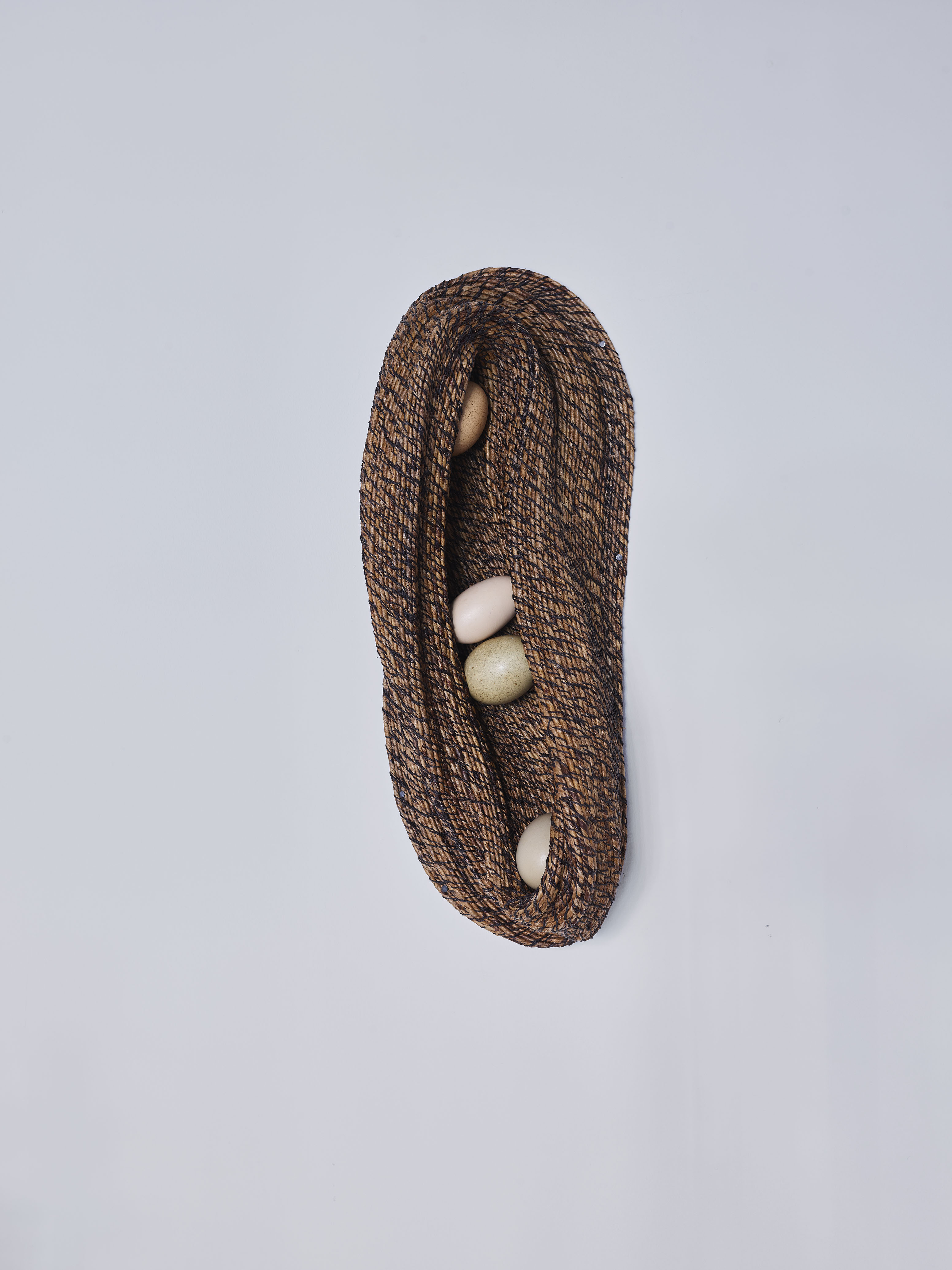
Dan Coopey , Untitled (configuration), 2021
banana fibre, waxed coated cotton, egg shells, 46 x 17 x 10 cm

Dan Coopey , Untitled (configuration), 2021
banana fibre, waxed coated cotton, egg shells

Dan Coopey , Untitled (configuration), 2021
banana fibre, waxed coated cotton, egg shells
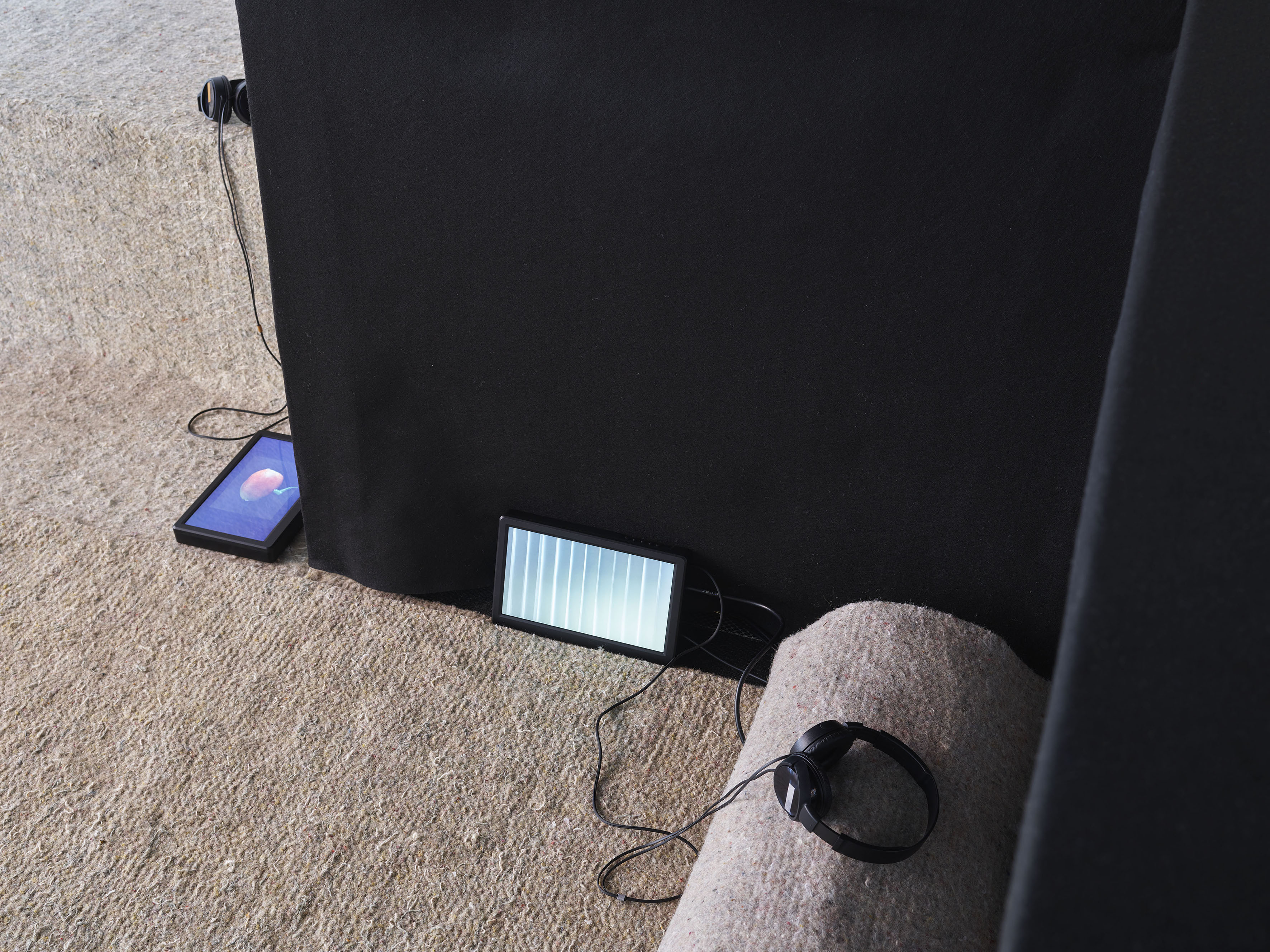
Elisabeth Molin, set of ends & somewhere in SE, 2018 - 2021
HD videos, ed.3 + 2AP

Elisabeth Molin, somewhere in SE (still), 2018
HD video, 16:9, colour, stereo, 3:50 min

Elisabeth Molin, somewhere in SE (still), 2018
HD video, 16:9, colour, stereo, 3:50 min

Johanna Magdalena Guggenberger, Le Femme Capable
plaster of Paris cast from a full goat hide bag, approximately 23 x 32 x 32 cm
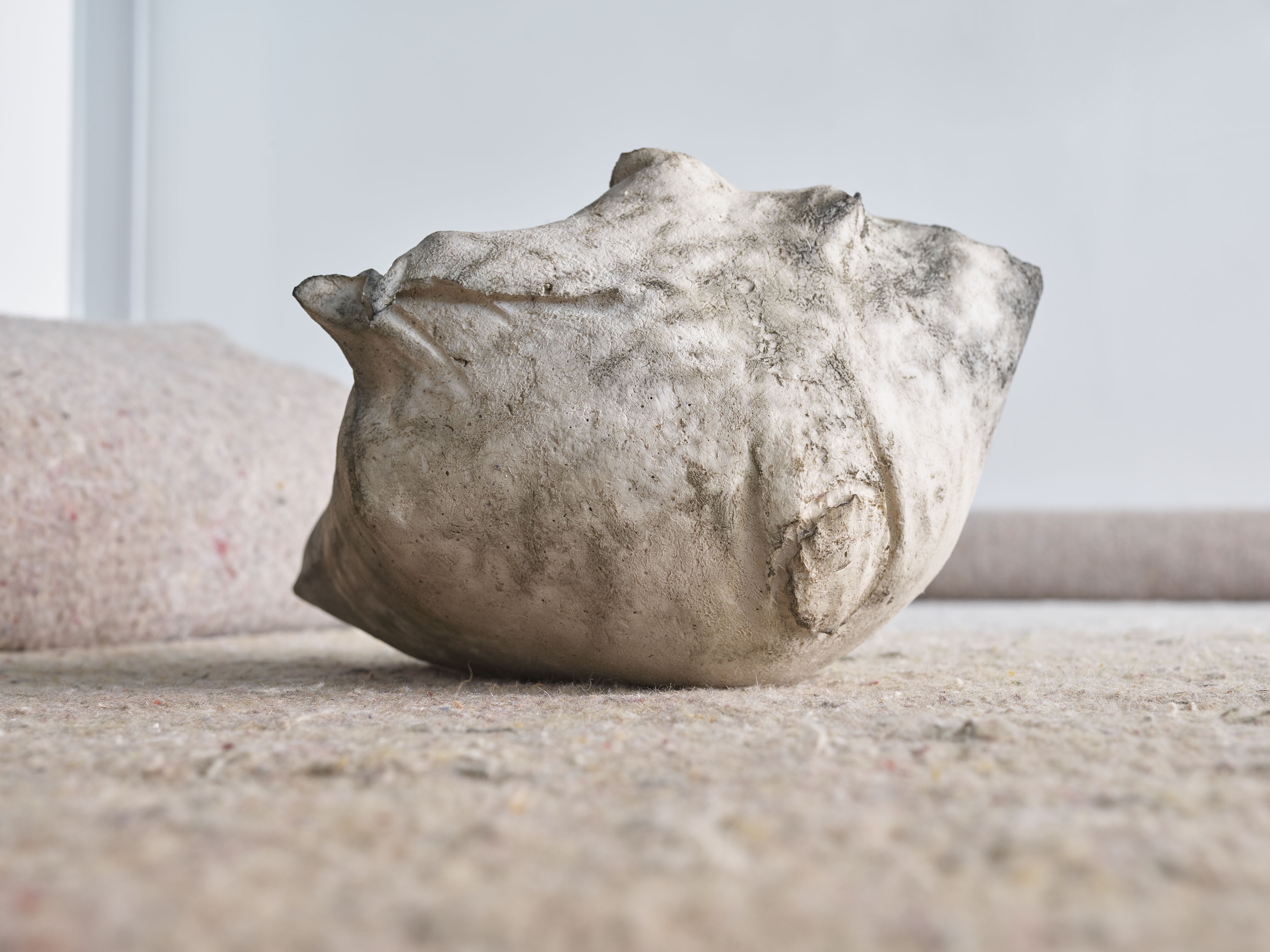
Johanna Magdalena Guggenberger, Le Femme Capable, 2021
plaster of Paris cast from a full goat hide bag, approximately 23 x 32 x 32 cm

Johanna Magdalena Guggenberger, Le Femme Capable, 2021
plaster of Paris cast from a full goat hide bag, approximately 23 x 32 x 32 cm

Joel Tomlin, Horseman, 2021
patinated bronze, 20.5 x 8.5 x 2 cm
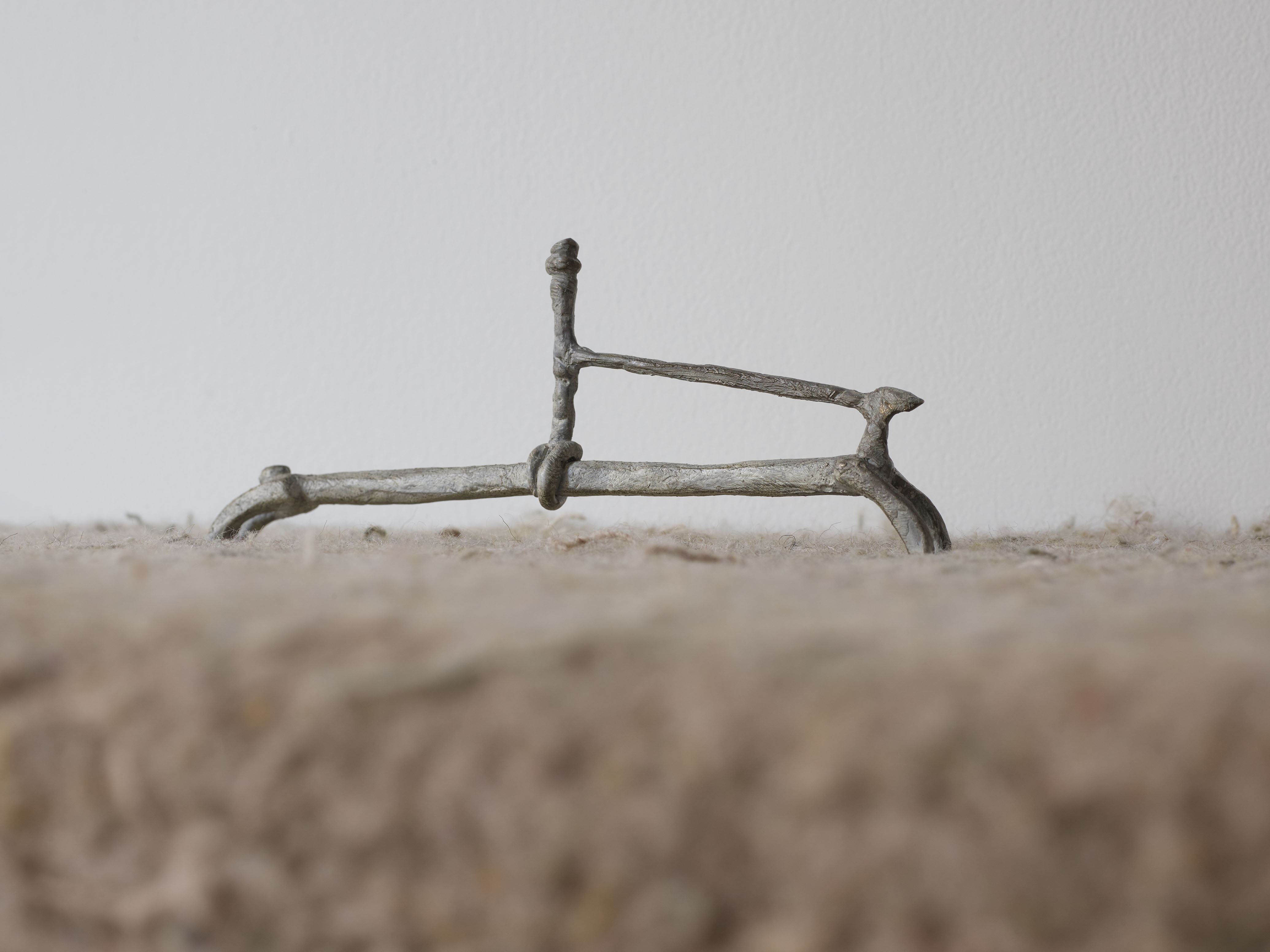
Joel Tomlin, Horseman, 2021
patinated bronze, 20.5 x 8.5 x 2 cm

Abbas Zahedi, Delete the Beans, 2021
beans, Tipp-ex bottle, Tipp-ex, 8.5 x 5 x 5 cm
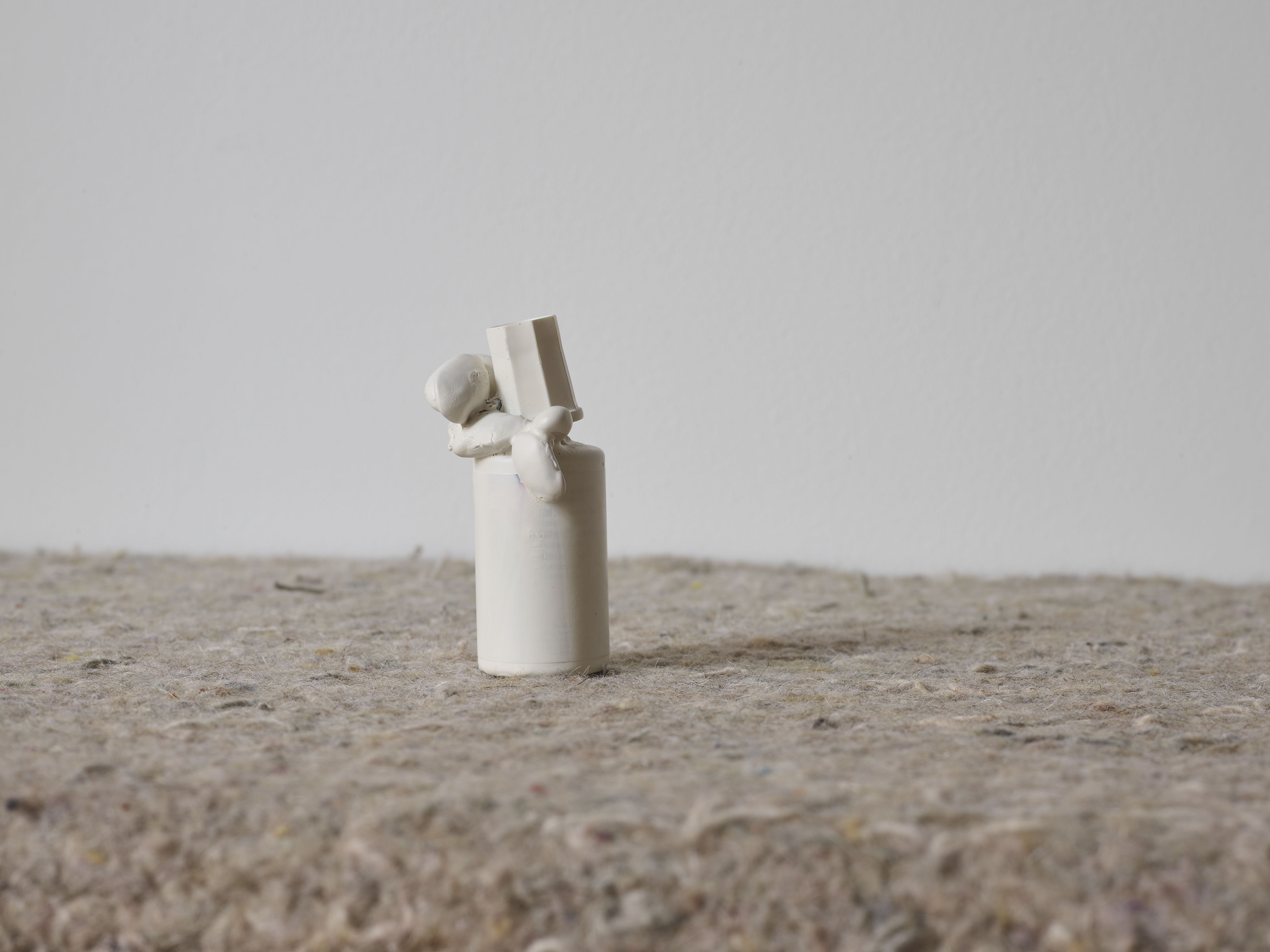
Abbas Zahedi, Delete the Beans, 2021
beans, Tipp-ex bottle, Tipp-ex, 8.5 x 5 x 5 cm
Beuys Open Source: Manifesto
We are what we have never been and that which we will always be. Life is a paradox. We can work with and through that or succumb to a binary:
never ideal.
As a start-up CEO, Joseph Beuys’ mission statement could have been “show your scars!” On the one hand, a position which embraces vulnerability. Specifically, the risk of fabulating a future you want to see/be now, no matter how much this leaves you out in the cold.
“Don felt,” as he would say.
On the other hand, the showing of scars can be seen as — reduced to, in that act of gazing — a somewhat fetishistic clinging to that which hurts. That is, a polemic expression of pain: “Ow!” my struggle is more than yours. Narcissistic self-whooping,
never ideal
But some route to get ahead.
Read either way, our Beuys.
The start-up CEO.
Working with, re-working with, the magical slippages innate to a vision of being more than, forms abound.
ONTO-EPISTEMIC ICONOCLASM
Serendipity rife
Imagination loose lipped.
Material becomes matter
Paradox becomes plaything
Ingestion and digestion become processes of production.
Our Beuys.
In the business of that slippage. Mining, without allegory, resources that are seemingly endless: those bound to the ideal / freedom seeping outside from that which will always be if we choose to strive for that which we have yet too never become.
Toby Upson, 2021

Installation View